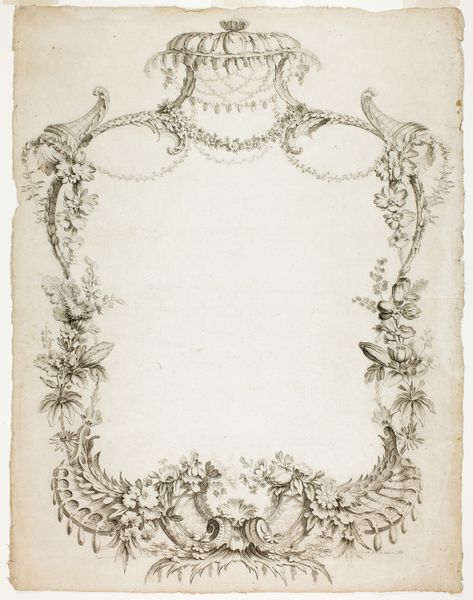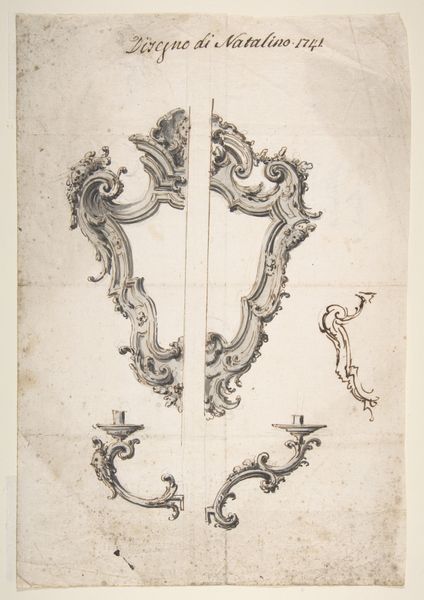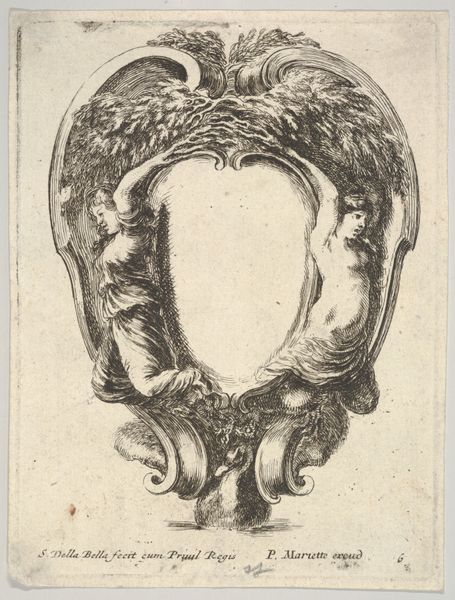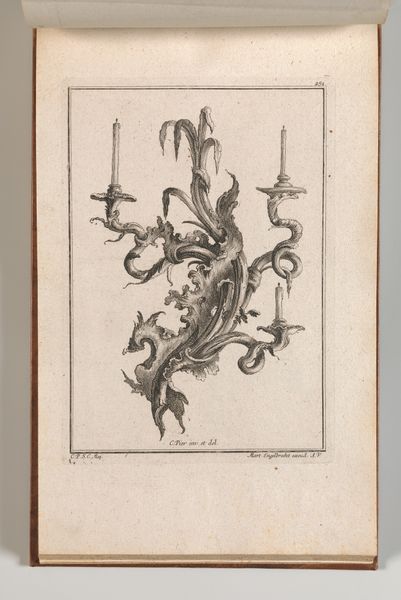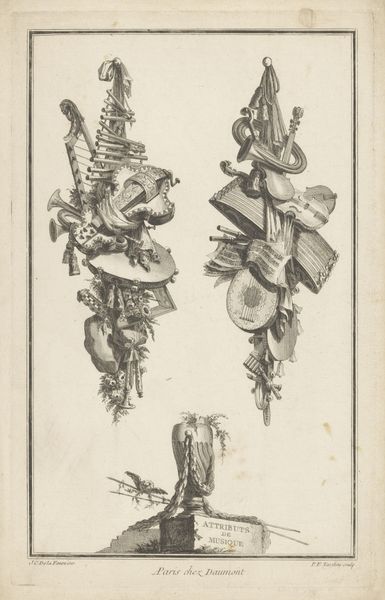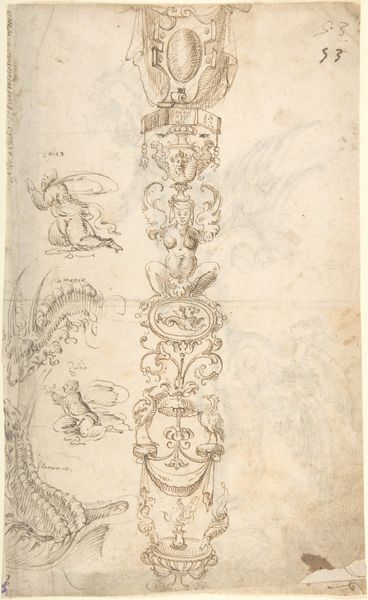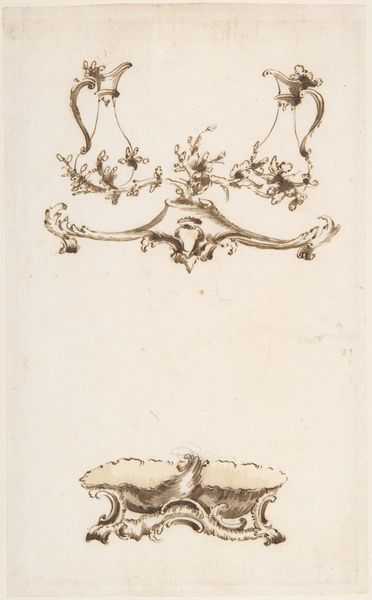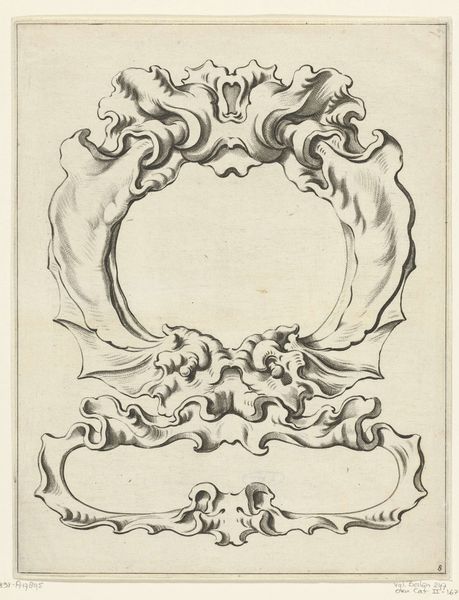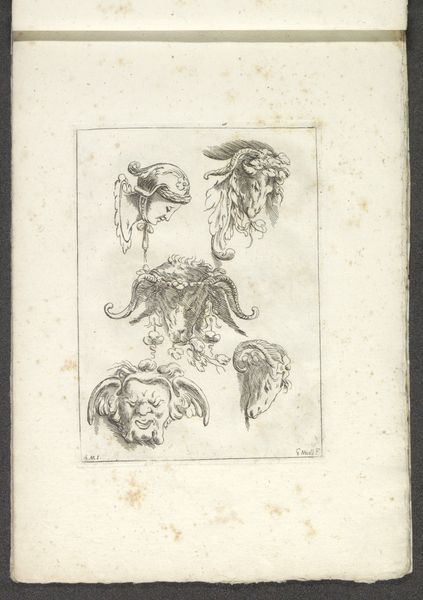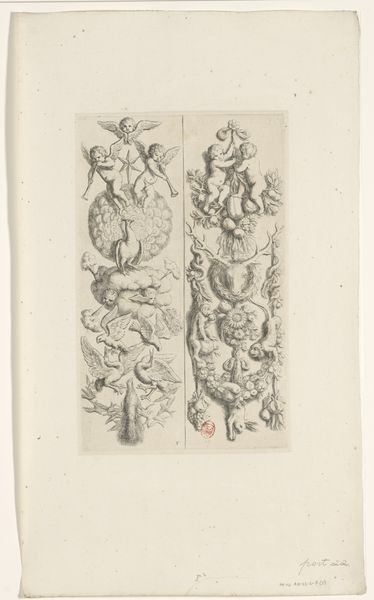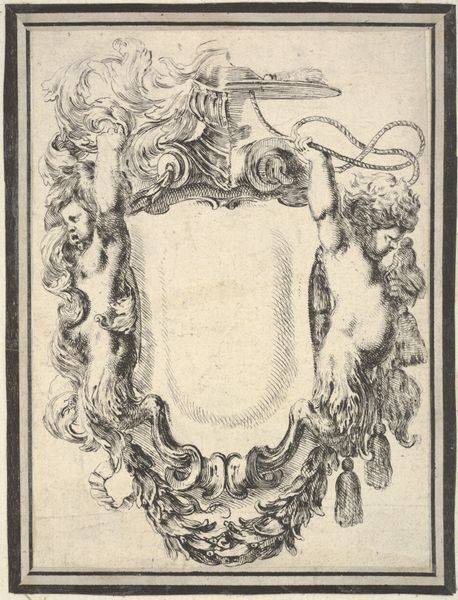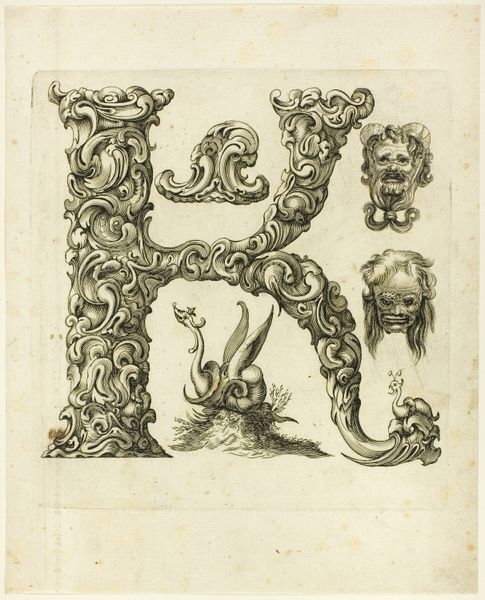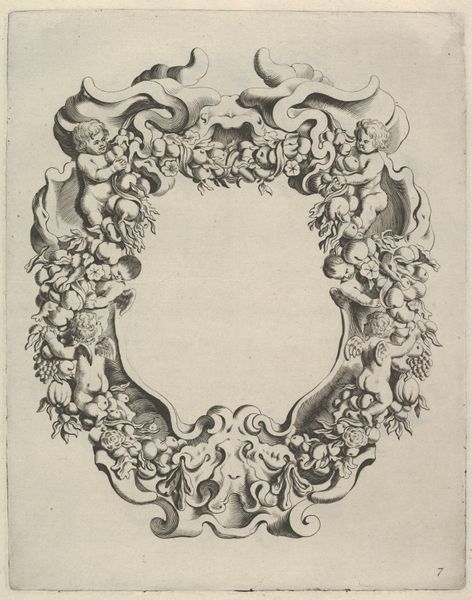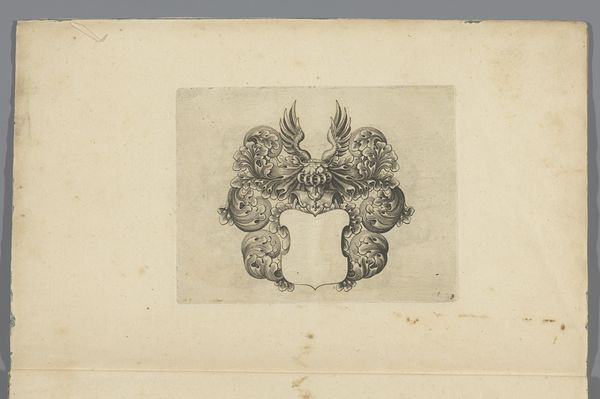
Design for a Garland from 'Various New Festoons, Part II' (Verscheide Nieuwe Festonnen, tweede deel) 1694
0:00
0:00
drawing, print
#
drawing
#
baroque
# print
Dimensions: Sheet: 5 1/16 × 7 1/2 in. (12.9 × 19.1 cm)
Copyright: Public Domain
Curator: Looking at "Design for a Garland," created by Michiel Mosyn in 1694, I'm struck by the sheer volume of detail rendered simply with drawing and printmaking techniques. Editor: My first impression is one of understated opulence. Despite the monochromatic palette, the density of fruit and foliage suggests lavish abundance. Curator: It's fascinating to consider these garland designs within the broader context of the late 17th century. Floral and fruit motifs were immensely popular, adorning everything from architecture to textiles. Editor: Absolutely, and this speaks volumes about the accessibility of art and design to a wide range of craftspeople. Here's a pattern easily transferred and adapted. You see the labour of design disseminated into larger scale artisanal manufacturing processes. Curator: The garland, traditionally a symbol of celebration and honour, becomes almost democratized through its application in various crafts and trades. Consider the printing process itself: allowing for the wide circulation of these designs beyond elite circles. Editor: I think we see, in these carefully rendered lines and detailed fruits, the beginning of mass production techniques. This wasn't 'art' in the sense of a unique creation, but an industrially useful template. It allows for further adaptation in terms of materiality depending on available manufacturing. Curator: An excellent point. The choice of materials then – the paper, the ink, the printing plates – all contribute to the accessibility and function of the design. Paper, while potentially fragile, allowed for easy transfer and modification, fueling this artistic democratization we see happening. Editor: Seeing the process and not just the art enables an analysis of how cultural symbolism changes from a gesture of aristocratic or ecclesiastical patronage to one reflecting new emerging mercantile powers. These images, once they leave the printing press, start new lives shaping culture itself. Curator: It is compelling to think about these garlands not just as decorative elements, but as embodiments of the changing socio-economic landscape of the era. Editor: It is certainly interesting to ponder how this single sheet reveals broader narratives of consumption, craft and commerce in the baroque era.
Comments
No comments
Be the first to comment and join the conversation on the ultimate creative platform.
